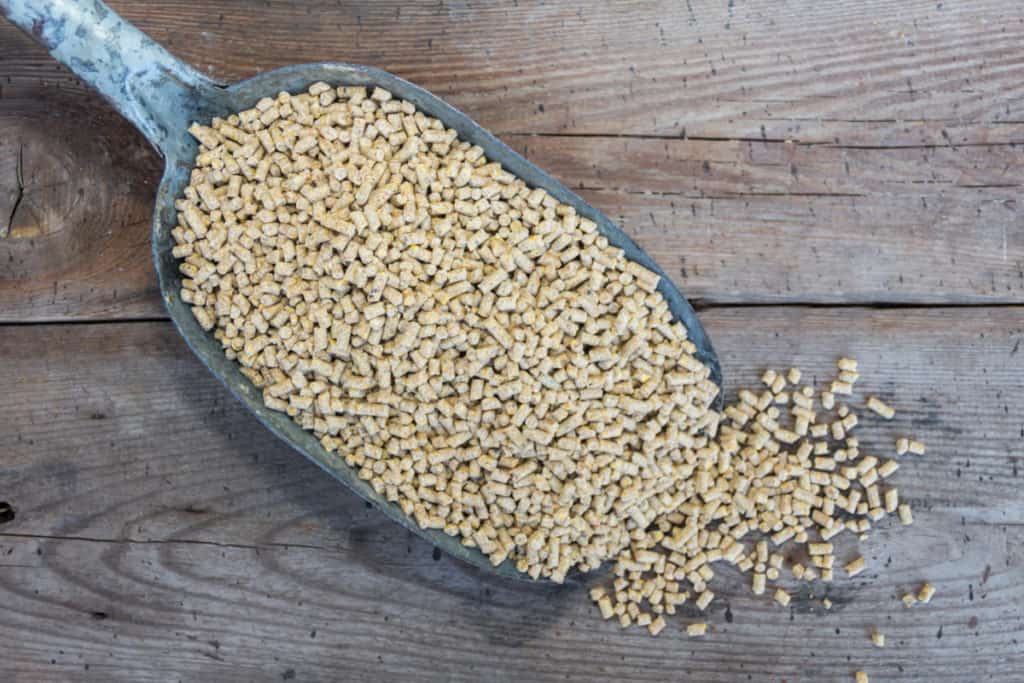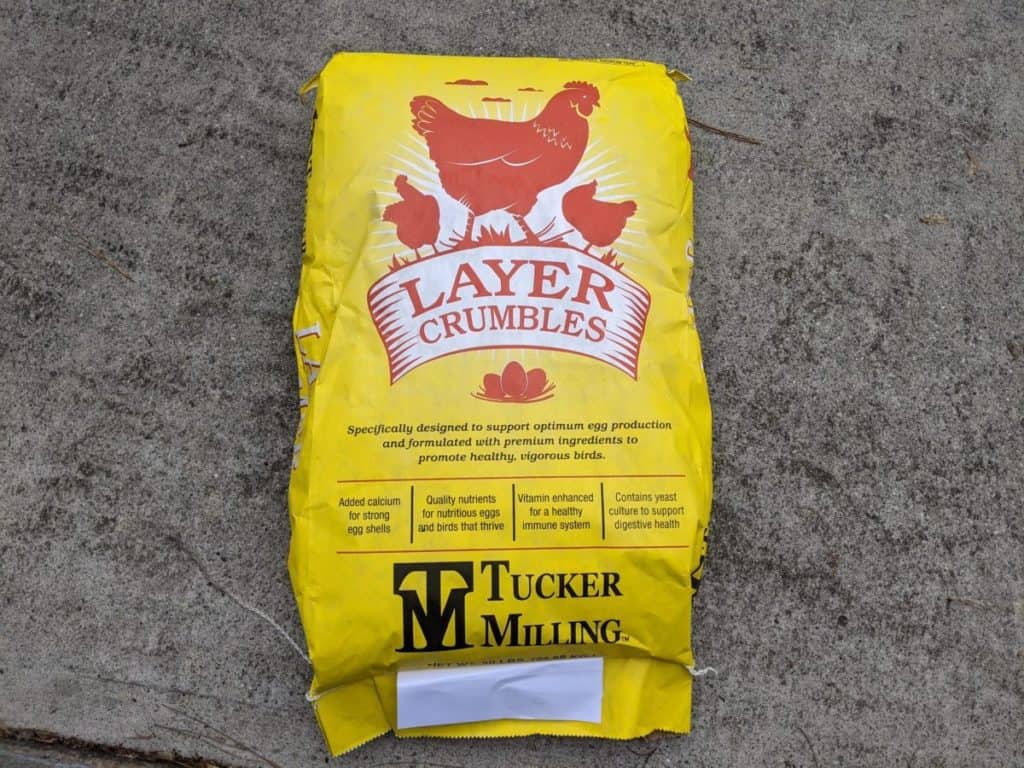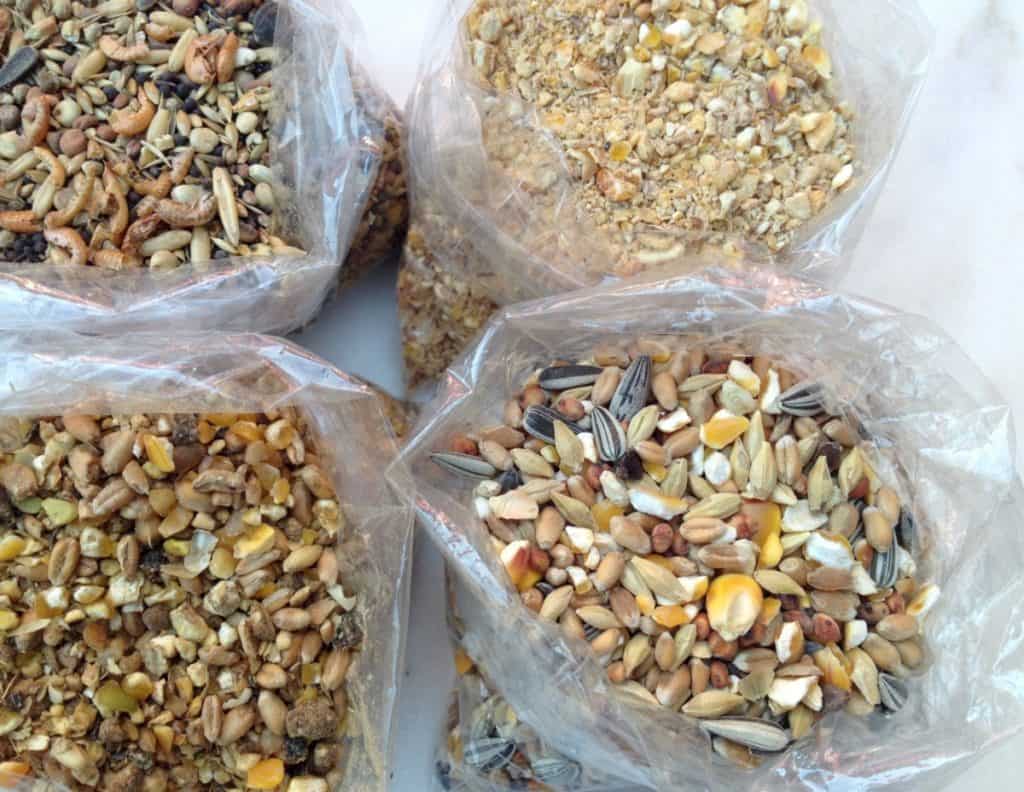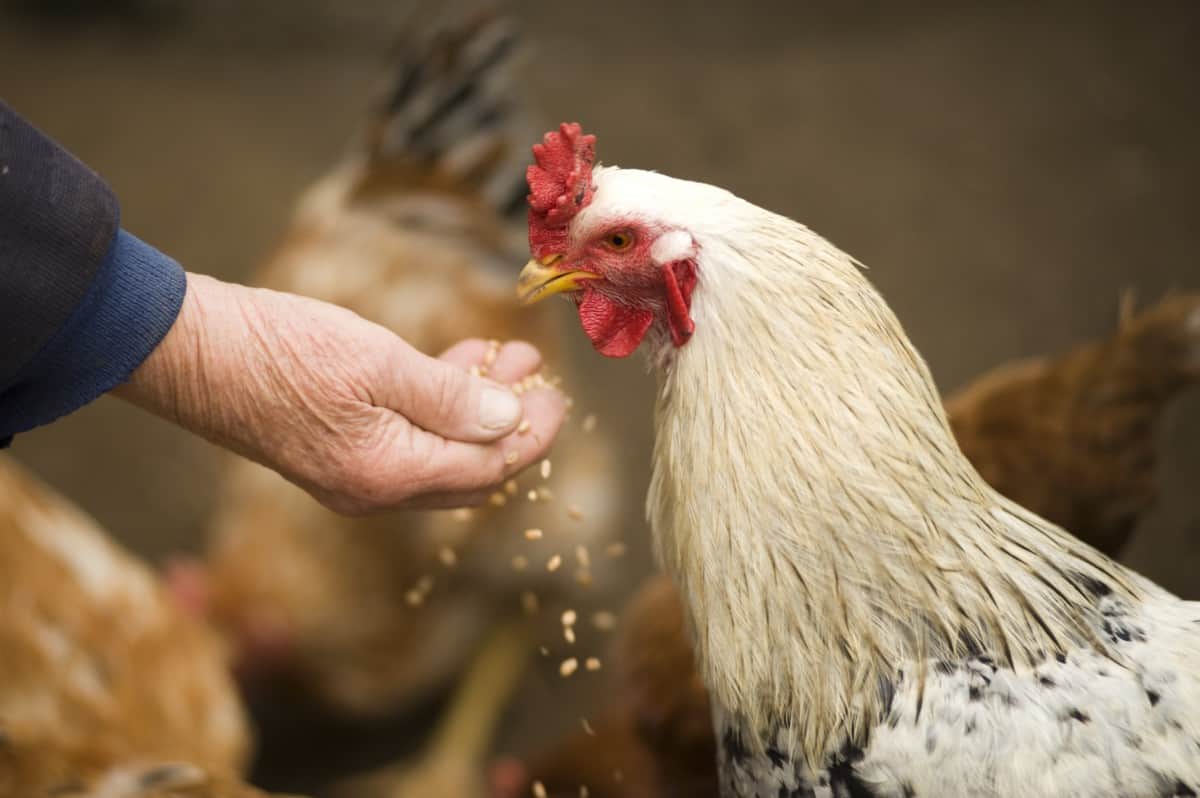Feeding your chickens can be confusing with all the different types of chicken feeds out there. Not only do you need to select the right food to get them growing or laying, but what is the best form of chicken feed to provide?
Chicken feed is produced in four different forms. There is mash, crumbles, pellets, and grain chicken feed. Each one has benefits and disadvantages to consider. The age of the chicken affects the type of feed. Chicken feeds have been developed to meet the needs of chickens bred for different purposes.
Chickens have different nutritional needs as their life stages change. You need to choose the right food to provide adequate nutrition.
What Are The Four Different Kinds Of Chicken Feed?
Chicken feed is available in four different forms.
- Mash or meal chicken feed.
- Pelleted chicken feed.
- Crumble chicken feed.
- Grain chicken feed.
Mash Or Meal Chicken Feed.
Chicken feed that comes as a mash or meal is ground-up grains and cereals. It is not processed further into pellets or crumbles. Mash feed is very fine, and the pieces are tiny. It is often used for baby chicks as it is easy for them to pick up and swallow.
A disadvantage of mash is that it is easily wasted. Chickens naturally scratch in their food, and the fine grains of mash can easily be lost in the soil. For this reason, it is usually used as a starter feed. They are moved onto alternative food as soon as they can eat bigger food pieces.
Some people like to moisten the mash as it makes it clump together slightly and less powdery, making it less wasteful. Some chicken owners believe the chicks can pick it up and swallow it more easily.

Pelleted Chicken Feed.
Pelleted chicken feed is made by grinding the ingredients and processing this through a machine that produces small cylindrical pellets. Chicken feed companies most commonly produce feed in a pelleted form.
Pelleted feed is popular with chicken owners as there is minimal food wastage. It is important to note that pelleted feed usually contains preservatives.

Crumble Chicken Feed.
Crumble chicken feed is made from broken up, rolled, or cracked pellets. The grain size is in between the powdery meal and the pellets. It can be useful for feeding chicks to allow them to transition from mash to pellets. This is the only feed that my bantam chickens will eat, after transitioning them from grower feed they refused to eat the pellets.
Crumble chicken feed often contains preservatives. If you aim to feed your chickens preservative-free foods, it is imperative to check the ingredient list on chicken crumble.

Grain Chicken Feed.
Whole grains, seeds, and cereals are mixed to form chicken food that has a muesli-type texture. The grains may be cracked, rolled, or micronized to allow the chickens to eat and digest the food more efficiently.
Grain chicken feed is popular with chicken owners that try to keep their chickens as naturally as possible. Some owners and researchers believe that chickens have better nutrient absorption from grain feed.
What Type Of Chicken Feed Is Best?
The different chicken feeds have various applications. Newly hatched chicks may struggle to eat grain or pelleted feeds. It can be difficult to grind grains small enough for tiny chicks.
Sometimes finely ground grain food for chicks is challenging to find. In this case, mash is best for growing chicks.
Some people prefer to feed grain feeds as they believe it is more natural and the chickens absorb the nutrients better. Many owners like to see and identify the ingredients in their chicken food.
Pellets are the most commonly found form of chicken food. Some chicken owners feel the pellets are easier to manage, and there is the least waste with this food form. It is difficult to find grain chicken food in some areas or countries, and owners have no option but to feed pelleted food.
Crumbles are readily available in most areas and are helpful when feeding adolescent chicks. Crumble chicken feed can be messy but is often only provided for a few weeks until the chickens are old enough to eat pellets or grains.
What Is The Cheapest Chicken Feed?
Chicken feed prices vary depending on where you live and the availability of ingredients. Generally, whole grain chicken feeds are more expensive, especially those that do not contain maize or soya.
One way to reduce the cost of chicken feed is to ferment the feed. Use mash for this as the finely ground meal speeds up the fermentation process. Chickens will eat one-quarter to one-third less fermented chicken feed than regular feed.
Fermented feed forms into an oatmeal consistency which reduces wastage. It also allows the chickens to absorb vitamins and minerals optimally, as it facilitates digestion.
How To Ferment Chicken Feed.
Use a ratio of one portion chicken feed to two portions of water. Mix the feed and water well and leave it in a pail, covered by a cheesecloth covering. Stir the mixture once every day. After three days, the food will be ready to feed to the chickens.
Grain chicken feed can be processed similarly to form a sprouted chicken food. It is more complex as different grains have different germination periods, so the chicken owner often chooses to use only one grain.
The process is more complicated than fermentation. It involves soaking the grains several times a day and draining the water off. It usually takes six to seven days, depending on germination rates and the environmental temperature.
Do Layers And Broilers Eat The Same Feed?
Layer and broiler chicks eat the same food for the first few weeks of life. They require a high protein content that allows them the necessary energy and nutrients for growth and feather development.
As the chicks grow, there will be a differentiation between feeds for broilers and layers. Broiler chicken breeds are genetically chosen to grow rapidly and achieve muscle mass quickly. To do this, they need a high protein feed.
Broiler feed ranges between 18 % to 24 % protein, depending on the brand of feed that you choose. Layer feed is usually only 16 % protein as the chickens do not need to grow fast. Layer feed is rich in minerals such as calcium which are essential for egg-laying.
Conclusion.
Chicken feed comes in different forms. The age of your chicken affects the form of the chicken feed you choose. Chicks need feed that has smaller pieces.
Adult chickens can easily manage pellets or whole grains. The purpose or function of your chickens affects the feed you choose.
Broilers must be fed differently to layers. Individual chicken keepers have their preferences for chicken feed.

